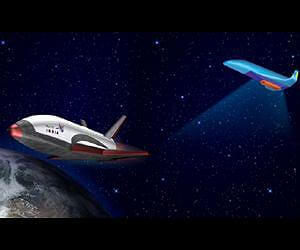The Indian Space Agency will develop the RLV (Reusable Launch Vehicle) technologies through a supersonic flight experiment, a test landing, repeated flight tests and an experiment with a new drive system - scramjet. while their Chinese counterparts announced that they intend to use space efficiently and with financial savings, and therefore they will develop a reusable launch vehicle

The Indian Space Agency will develop the RLV (Reusable Launch Vehicle) technologies through a supersonic flight experiment, a test landing, repeated flight tests and an experiment with a new drive system - scramjet.
In June, India will launch a self-made reusable launch vehicle (RLV) for a test flight that will be able to take off outside the atmosphere and return to Earth several times.
"The winged vehicle, in the form of an airplane, will be launched from Sriharikota for its maiden flight in June," said Indian Space Research Organization (ISRO) Chairman AS Kiran Kumar at an Indian Air Force event in Bengaluru. Sriharikota is on the coast of the Andhra Pradesh state about 80 km northeast of Chennai.
When the cost of access to research and space utilization is expensive the reusable launch vehicle (RLV-TD) could reduce the cost of launching future satellites.
The launch follows various tests including acoustic tests at India's National Aeronautics Laboratories, where a flight test facility is operating that will be able to evaluate the technologies needed for supersonic flight, autonomous landing, and cruise flight powered by air-breathing engines
"The vehicle will be flown to an altitude of 70 km and released to re-enter the atmosphere. It will have to withstand atmospheric pressure and the heat caused by the friction back into the atmosphere." Kumar said.
"The size of the prototype vehicle is about one-sixth of the final size, so we are not yet required to use our Polaris launcher," the ISRO chief added.
The space agency is also working on the second version of the Geosynchronous Satellite Launch System (GSLV Mark-III) that could carry four-ton satellites into geostationary orbit, about 36,000 kilometers above the Earth's surface.
The first experimental flight of the heavy rockets was carried out on December 18, 2014, in which its atmospheric phase was tested.
China plans to develop a reusable manned spacecraft
"China is learning how to retrieve and reuse its manned spacecraft in future missions," said the chief engineer of China's manned space program last week.
"Our next goal is to reuse a manned spacecraft. We want to explore space in a cost-effective way," said Zhou Jianping when China marked Space Day in honor of the anniversary of the launch of the first Chinese satellite on April 24, 1970.
A reusable manned spacecraft is the holy grail of space exploration. The United States developed the space shuttles that were supposed to be used for manned low-orbit flights, but all were grounded in 2011 due to high costs and risks, including the Columbia disaster in 2003, which killed seven astronauts.
Zhou did not go into the details of the plan but emphasized that his group's focus is on cost savings. He provided an example from the Tiangong Space Lab series.
"Tiangong 1 was supposed to be the first of three space laboratories, followed by Tiangong 2 and 3, but the Chinese scientists managed to integrate all the tasks planned for the third generation of the laboratory into Tiangong-2," he said, "so there is no longer a need to develop The Tiangong-3".
China's space station, whose construction is expected to be completed around 2022, will also be "green, economical and highly advanced in flight control, power supply and waste recycling facilities," according to Zhou.
A few weeks ago, the American company SpaceX reported that it had for the first time succeeded in landing a launcher on a rig in the middle of the sea.
For news about Indian development
For news about the Chinese development

2 תגובות
And Russia is building a new cosmodrome in Eastern Siberia (she knew about the intention to build it on the site a long time ago). They launched satellites from there, and in the future also cosmonauts. And so they will give up Bikaner in the Kazakh cosmodrome. Interesting, with Russia she would have given up the Winter Olympics (50 billion dollars), the fighting in Ukraine and Syria , the World Cup, and therefore she would invest in a manned base on the moon, as they planned. But that is already fictional history.